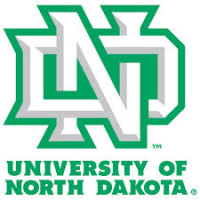Athletic Facilities
Athletics
The Facts
Athletic participation has increased in popularity in the past several decades. Unfortunately, athletic activity results in many types of dermatoses. Infectious conditions exemplify the most common cutaneous ailments of athletes. Fungal, bacterial and viral infections represent the majority of skin infections in athletes. For a variety of intrinsic and extrinsic factors, athletes experience an increased risk of these cutaneous infections. Once infected, athletes may endure loss of practice time and disqualification from competition. Rapid diagnosis, appropriate institution of therapy and attentive prevention programs all minimize the deleterious effects of skin infections for both the athlete and the team.
Methicillin-resistant Staphylococcus aureus (MRSA)
Athletes, from professionals to weekend warriors, have developed furunculosis in epidemic proportions. Many different types of sports participation may result in cutaneous S. aureus infection, including basketball, cross-country, fencing, football, hockey, rugby, soccer, volleyball, weightlifting and wrestling. Skin-to-skin contact probably plays a primary role in basketball, football, rugby, soccer and wrestling; while contact with fomites may play a relatively larger role in sports such as cross-country, fencing, volleyball and weightlifting. In practice, a combination of these factors causes epidemics of S. aureus.
Impact
The seminal paper of MRSA in athletes described a major epidemic in a U.S. professional American football team, the St. Louis Rams, in 2003. A total of 9% of the team experienced furunculosis and lost 17 days of practice and competition. After a rigorous review of the epidemic, the investigators identified one of the major contributing factors as the staff’s failure to periodically clean the weights in the training room.
Several collegiate football epidemics have occurred as well. Ten members of a 100-person college football team developed MRSA infections. The presence of turf burns correlated with increased prevalence of MRSA infections (relative risk: 7.2). The relative risk of developing MRSA infection was also related to player position. The cornerback and wide receiver positions possessed relative risk values of 17.5 and 11.7, respectively. Body shaving, which represents a common practice among athletes, increased the risk of developing MRSA infection (relative risk: 6.1). Interestingly, the use of the whirlpool two times or more per week increased the relative risk of developing MRSA infection to 12.2.
Treatment
MRSA is treatable. By definition, MRSA is resistant to some antibiotics. But other kinds of antibiotics still work. Some of these antibiotics are only available intravenously. Unfortunately, there is emerging antibiotic resistance being seen with some of these medications. Antibiotics, however, aren’t always necessary. If you have a skin boil caused by MRSA, your doctor may just make an incision and drain it. If you are prescribed antibiotics, follow your health care provider’s instructions precisely. Never stop taking your medicine, even if you’re feeling better. If you don’t take all of your medicine, some of the staph bacteria may survive. These survivors then have the potential to become resistant to the antibiotic. They also could re-infect you or infect someone else.
Prevention
While following a regimented treatment plan is essential once infected. the best treatment plan is prevention. Due to the proximity of athletes and the transmission of infection through environmental contaminants, ensuring the practice, preparation and play environments are clean is extremely important. See how Invisimed can help!
Some of Our Clients
See How Invisimed Can Help
Schedule a facility audit to see for yourself how Invisimed can completely change the way you perceive clean.





